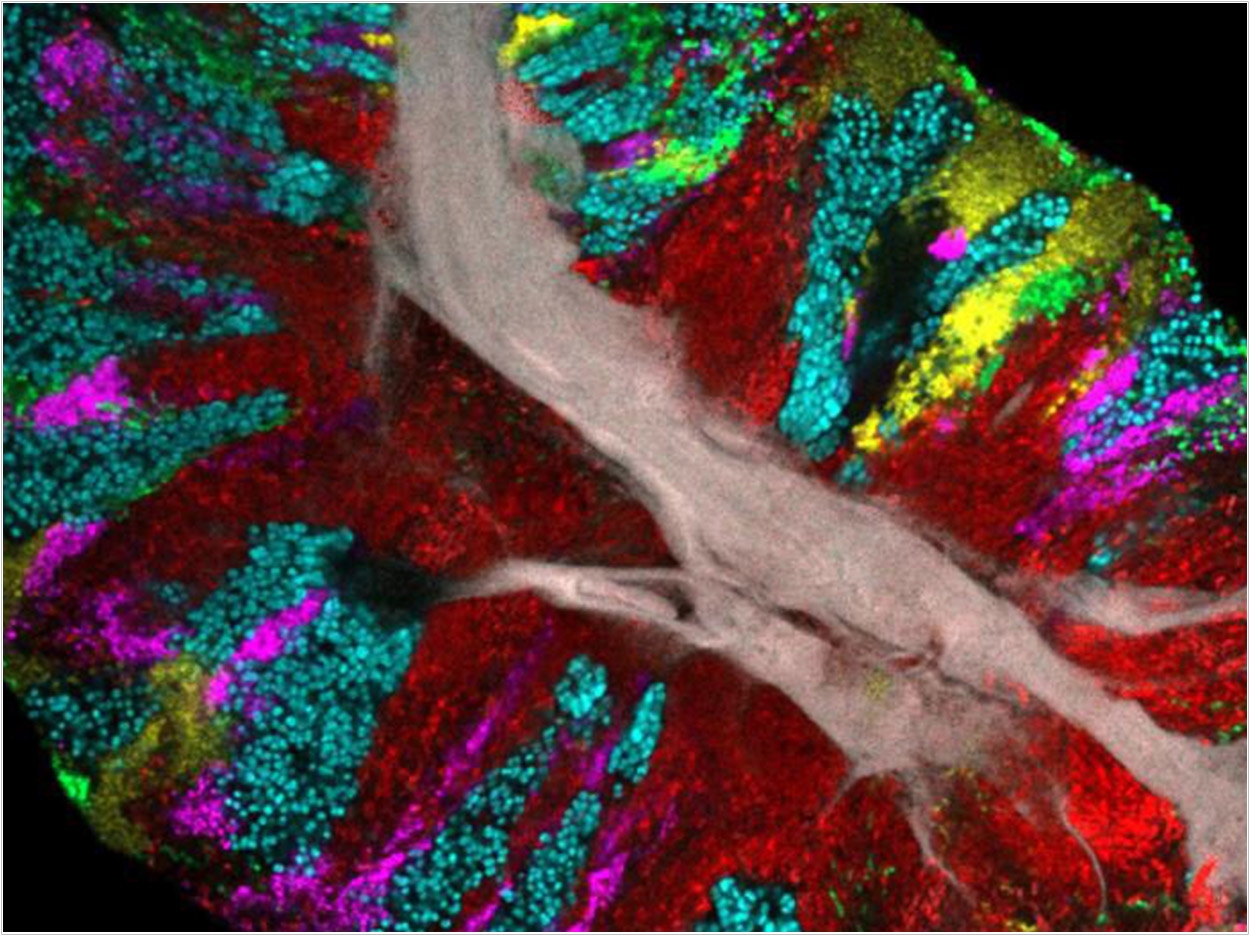
Researchers at the Forsyth Institute and the Josephine Bay Paul Center for Comparative Molecular Biology and Evolution are using a new technique to visualize fluorescently labeled bacteria in intact biofilms scraped from the tongues of 21 healthy human volunteers.
“No one before has been able to look at the biofilm on the tongue in a way that distinguishes all the different bacteria so that we can see how they arrange themselves,” said senior author Gary Borisy, PhD, of the Forsyth Institute and the Harvard School of Dental Medicine.
Each color in the image represents a different type of bacterium. Human tongue tissue (gray) forms a central core from which the microbial community grows outward, as indicated by clusters and stripes.
Three of the bacterial types known to be prevalent on the human tongue—Actinomyces (red), Rothia (cyan), and Streptococcus (green)—were present in all 21 participants in the study. Their prominence suggests that they may be important to maintaining oral and overall health.
For example, Actinomyces and Rothia on the tongue are thought to help convert naturally occurring chemical compounds found in certain foods called nitrates into forms the body can use for basic functions.
“We think that learning who is next to who will help us understand how these communities work,” said coauthor Jessica Mark Welch, PhD, a microbiologist at the Josephine Bay Paul Center for Comparative Molecular Biology.
“Such efforts can help scientists better define microbes’ roles in conditions like gum disease and tooth decay and could help identify microbial targets for treating diseases and maintaining health in the mouth and beyond,” Welch said.
Funded by the National Institute of Dental and Craniofacial Research, the study, “Spatial Ecology of the Human Tongue Dorsum Microbiome,” was published by Cell Reports.
Related Articles
Interfering With BMP6 Activity Improves Sjogren’s Syndrome Symptoms
Marfan Syndrome Patient Gets Successful Dental Implant Treatment
Rapamycin Fights Gum Disease and Spurs Bone Growth in Older Mice












